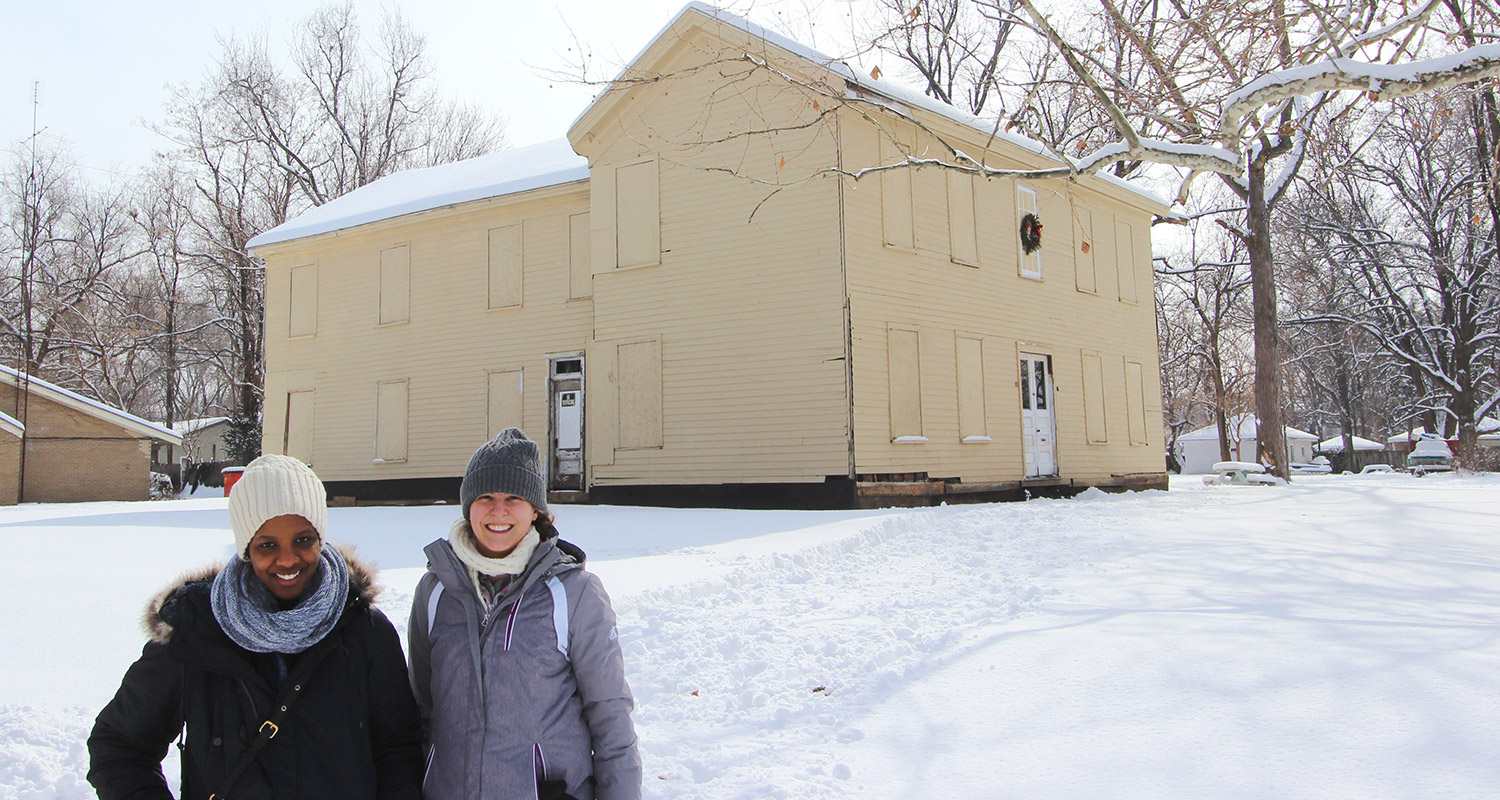Springfield (November 2016)
A transformation is taking place on Springfield’s east side. The Springfield Project, a neighborhood-based organization, recently completed the first phase of repairs to the pre-Civil War era Judge Taylor House for a future community center. The removal of asbestos siding and stabilization of the foundation was funded in part by an Landmarks Illinois Heritage Fund grant. The House, previously on Landmarks Illinois’ 2004 Most Endangered Historic Places list, is connected to Springfield’s African American history as well as its Lincoln-era past.
The Springfield Project, a neighborhood-based organization, recently completed the first phase of repairs to the pre-Civil War era Judge Taylor House for a future community center.
Landmarks Illinois has also continued to collaborate with Loyola University in the preparation of nominations to the National Register of Historic Places for several properties, including the Taylor House. Fazila Kabahita and Kelly Schmidt, graduate students at Loyola University’s Public History Program, documented the rich history of the Taylor House which included its use as the Ambidexter Institute, a school for African American children. The Springfield Race Riots of 1909, which sparked the formation of the National Association for the Advancement of Colored People (NAACP), saw the Illinois National Guard protect the Ambidexter Institute from nearby rioters. National Register listing will recognize this significant heritage and will bolster efforts to transform the Taylor House into a neighborhood gathering place and a landmark signifying the power of partnerships.
Photo: Students Fazila Kabahita and Kelly Schmidt documented the Taylor House’s rich history (credit: Frank Butterfield)

